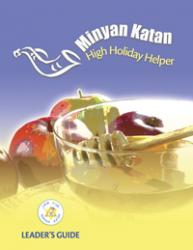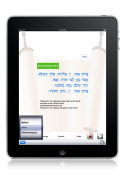- Home
- Play & Learn Home
- Online Enrichment
- Experience Modern Israel
- Israel It's Complicated
- Jewish and Me
- Jewish Holidays Jewish Values
- Jewish Values in Genesis and Jewish Values in Exodus
- Min Ha’aretz
- Our Place in the Universe
- Simply Seder
- The Prophets: Speaking Out for Justice
- Making T'filah Meaningful
- Make, Create, Celebrate
- Yom Haatzmaut Resources
- Hebrew Apps
- About The OLC
- What is the OLC?
- Introduction
- Get Started
- Resources
- OLC Content
- Parent Materials
- See My OLC Classes
- Store
11 Tips for Planning and Leading Vibrant Family Services
Written by Behrman House Staff, 23 of July, 2013Meaningful family services and programs are an excellent way to welcome new families, to introduce families to one another, and to help them develop the strong relationships that will keep them coming back. Creating a welcoming, fun, educational space where parents, young children, teens, and community members can all experience the joy of prayer together engages everyone in the spiritual life of your congregation. Using these tips from the variety of Leader’s Guides available from Behrman House, anyone can easily plan and lead vibrant family services that will help their community thrive.
1. Form a Family Services Leadership Team to gather information about current family services and to strengthen family services based on community input. Be sure to invite individuals who offer varied perspectives, including lay leaders, professional staff, educational leaders, and both regular and infrequent attendees of family services. Coordinate meetings to determine goals, to identify priorities, to survey congregants, to determine a style, and to ultimately write a vision statement for your family services.
- Ready to form your Leadership Team? You’ll find 25 pages of detailed instructions, meeting agendas, worksheets, survey templates, text studies, sample vision statements, and more in the Siddur Mah Tov Leader’s Guide.
2. Check the calendar and plan ahead. “Consider the upcoming Torah portion, and note if there are any upcoming holidays (Jewish or secular), or national or local events of interest to the community. When planning the year, schedule special programming, such as Grandparents’ Shabbat or Special Friend Shabbat." (Siddur Mah Tov)
3. Consider offering a special “Tot Shabbat” program for families with toddlers. According to Jewish dad Marc Stober, “it was the toddler years that established us as a religious—maybe not Shulchan Aruch religious, but still nominally religious—family.” (Read about Marc’s experience and learn how to create your own Tot Shabbat in Advice from a Jewish Dad: Make Tot Shabbat as Engaging as Secular Toddler Programs)
4. Get teens involved by inviting them to assist in leading the service or to act out a scene from the Torah portion.
5. Use music, movement, dance, games, props, and stories to make every service a fun-filled, inviting time to bring families and communities together. “Family services offer a unique opportunity for creative expression and experiential learning.” (Siddur Mah Tov) Siddur Katan, Machzor Katan, and Siddur Mah Tov all have music collections available and the Leader’s Guides provide lyrics, choreography, game templates, hand motions, and talking points.
- Get everyone to tap a beat and echo “Torah!” with an energetic song from the Siddur Katan Leader’s Guide. We think it’s so great that we’d like to share it with you for free: Download the lyrics (PDF) and listen to the song.
6. “Don’t panic if families don’t know all of the words or the tunes; repetition is key. Encourage families to hum or clap along. If you use the same tunes for a while, the ‘regulars’ will pick up on them and will support you.” (Siddur Mah Tov)
7. Incorporate art to encourage deeper thinking and to open up interesting conversations. The Siddur Mah Tov Leader’s Guide includes discussion questions to get people thinking about the beautiful paintings by Julie Wohl that illustrate the siddur.
8. Keep children with their parents. Encourage them to sit on the floor together in front of the leader, or have smaller groups sit in a circle.
- “Parental modeling is an important component of the learning achieved through this program. When separated (for example, children on floor, parents on chairs), parents quickly lose focus and chat among themselves rather than engaging in the service with their children and ensuring that their children do not infringe on the spiritual experience of other families.” (Siddur Katan)
9. Ask parents to help keep noise to a minimum by “deputizing” the parents as “official shushers.” (Machzor Katan)
10. Get everyone involved by asking thought-provoking questions. “Present the material as questions rather than simply telling them the information.” (Siddur Katan) For example:
- Welcoming: “Does anyone have a restful or peaceful feeling of Shabbat somewhere in their body? Maybe in their feet or in their head?” (Siddur Katan)
- Mah Tovu: The Israelites gathered together in tents to tell stories and feel safe in community. What makes you feel safe? (Siddur Mah Tov)
- Sh’ma: “Who knows what we do with our hands when we say the Sh’ma? Does anyone know why?” (Siddur Katan)
- Amidah: “What do you want to talk to God about?” (Siddur Katan)
- Oseh Shalom: “What do you do to help make peace in your family and in the world?” (Siddur Mah Tov)
11. Make the most of Kiddush. “The act of eating together can be very powerful, and the words and tunes of Kiddush and Hamotzi are powerful, too.” (Siddur Mah Tov)
- Have a volunteer make announcements.
- Have a volunteer pre-pour Kiddush grape juice and cut the challah while you sing Adon Olam.
- Encourage participants to reintroduce themselves after Hamotzi.
- Once a month celebrate birthdays with cupcakes.
- Read a Jewish story after kiddush.
- Collect age-appropriate toys and games for children to play with during and after kiddush.
These tips and everything else you'll need to lead family services can be found in the following Leader’s Guides:
 |
Create a spiritually engaging Shabbat morning service for families with young children. The service is targeted to meet the interests and needs of children ages two to six with integrated prayer, song, dance, Shabbat-related activities, and story time. Parents or caregivers participate in the service alongside their children, infusing quality family time into the richness of Shabbat. |
 |
Machzor Katan User’s Manual (Free download!) This free manual provides background information and instructions you’ll need to facilitate children’s services for Rosh Hashanah and Yom Kippur. It includes activity descriptions, lists of materials you will need, preparation notes, and room set-up suggestions. |
 |
The Leader’s Guide provides a script and step-by-step guide for service leaders using Machzor Katan, including suggested talking points and games for families. Includes free activity templates to photocopy and use for family Tashlich, a Rosh Hashanah Treasure Hunt, and "Jonah Bingo." |
 |
This guide is designed to help you think critically about the purpose and goals of your family services, to help you implement a process for creating or enriching family services, and to give you concrete ideas that will add depth and breadth to your family service. |
Both Machzor Katan and Siddur Katan are priced at just $6.95 per copy, with significant quantity discounts available for synagogues and schools, providing a truly affordable way to offer a regular and vibrant tot Shabbat experience in your community.
Siddur Mah Tov, available for both Reform and Conservative congregations, enriches family worship with lush paintings by artist and educator Julie Wohl. An audio CD by Craig Taubman, How Good, brings the word of the prayers of Siddur Mah Tov to joyful life. Quantity discounts are available for congregations and schools.
For even more engagement ideas, see 10 ways to use songs from How Good in your congregation.




